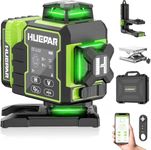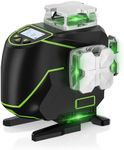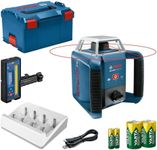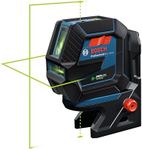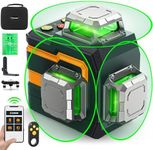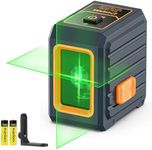Buying Guide for the Best Rotary Laser Levels
Choosing the right rotary laser level can make a significant difference in the accuracy and efficiency of your construction or DIY projects. Rotary laser levels are essential tools for ensuring precise horizontal and vertical alignment, making them invaluable for tasks such as installing ceilings, laying foundations, or landscaping. To select the best rotary laser level for your needs, it's important to understand the key specifications and how they impact performance. Here are the main specs to consider and how to navigate them.AccuracyAccuracy refers to how close the laser level can get to the true horizontal or vertical line. This is crucial for ensuring your projects are perfectly aligned. Accuracy is usually measured in fractions of an inch over a certain distance, such as ±1/8 inch at 100 feet. Higher accuracy levels are better for detailed work, while lower accuracy might be sufficient for less critical tasks. Consider the precision required for your projects when choosing the accuracy level.
RangeThe range of a rotary laser level indicates the maximum distance the laser can project a visible line. This is important for large-scale projects where you need to cover extensive areas. Ranges can vary from a few hundred feet to over a thousand feet. For small indoor projects, a shorter range may be sufficient, but for outdoor or large construction sites, a longer range is necessary to ensure the laser reaches all areas.
Self-LevelingSelf-leveling is a feature that allows the laser level to automatically find and maintain level within a certain range. This is important for ease of use and accuracy, as it reduces the need for manual adjustments. Self-leveling ranges can vary, typically from a few degrees. If you need quick setup and reliable accuracy, a model with a good self-leveling feature is essential.
DurabilityDurability refers to how well the rotary laser level can withstand tough working conditions, including exposure to dust, water, and impacts. This is important for ensuring the tool lasts long and performs reliably in various environments. Look for models with robust construction and high IP ratings (Ingress Protection) to ensure they can handle the conditions of your worksite.
Battery LifeBattery life indicates how long the laser level can operate on a single charge. This is important for uninterrupted work, especially on large projects. Battery life can range from a few hours to over a day. Consider the duration of your typical work sessions and choose a model with sufficient battery life to avoid frequent recharging.
VisibilityVisibility refers to how well the laser line can be seen under different lighting conditions. This is crucial for outdoor work or brightly lit environments. Some models offer enhanced visibility features or green lasers, which are easier to see than red lasers. If you often work in bright conditions, prioritize models with better visibility to ensure you can always see the laser line clearly.
